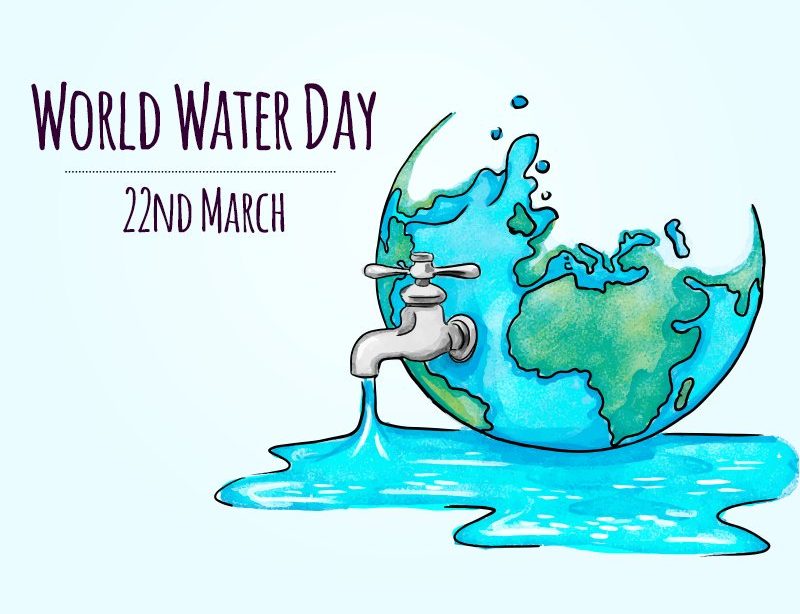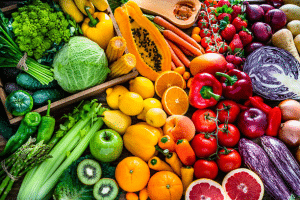World Water Day: Paani Hai, To Ham Hai

Every year, March 22 is widely known as World Water Day and therefore the theme for 2020 is ‘Water and global climate change .’
Water conservation and efficient usage is that the need of the hour—as quite 2 billion people sleep in countries with high water stress. additionally to numerous natural and human pressures, this precious resource is facing another catastrophic impact: global climate change .
“From the climate perspective, we glance at water during a very different way. it isn’t only in terms of drinking or irrigation, water is additionally associated with flooding, change in rainfall pattern, and it involves not just the surface water like ocean, river or lakes, but also the groundwater. the foremost important thing is to possess an integrated perspective of the various sorts of problems with reference to water,” says Dr. D Parthasarathy, Head, IDP in Climate Studies, Indian Institute of Technology, Bombay.

As the continued excessive emission of greenhouse gases exacerbate global climate change , extreme weather patterns—great floods, intense droughts, strong storms and powerful cyclones—are becoming far more frequent. With these impacts already visible, nobody can deny the very fact that global climate change and water are inextricably linked.
But, how deep is that this link between water and climate?
The backbone of the Earth’s water cycle is temperature! because the global average temperature increases relentlessly, it’s a considerable impact on atmospheric water vapor , clouds, precipitation patterns, runoff and streamflow patterns. The Earth’s rising fever can put unbearable stress on the water sector and may increase the likelihood of both heavy rains and droughts, especially in tropical countries like India.
According to a International Bank for Reconstruction and Development report, around 60 crore people in India face an excellent risk from extreme climate events. Some in India, including large states like Maharashtra, Tamil Nadu and Karnataka, are under the grip of acute drought conditions, while within the same states, few places are vulnerable to excessive flood.
“If you check out Chennai, one year there’s excessive rainfall (recall 2015 floods) and another there’s drought. Then you’ve got severe heatwaves and water shortage, within the same place where flooding happened , therefore these are all interrelated phenomena of global climate change ,” Dr. Parthasarathy says.
While multiple factors like topography and governance play a task , accelerating global climate change has been among the best threats to water security in India. the info from the State of India’s Environment by the Centre of Environment and Science show that the continuity and intensity of utmost weather events in India between 2018-19 are unprecedented.

Instance of utmost flooding events in India
According to the India Meteorological Department (IMD), the monsoon season in 2019 started at a slow pace thanks to the weak El Nino, which again features a strong link to global climate change . During the monsoon season—from June to September—the southwestern winds devour moisture from the Indian Ocean and drop it within the sort of rains across Indian mainland.
But, last year, the unusually hot summer extended deep into June because the monsoon set in very late across most parts of India. However, by late July, the incessant heavy rains started causing intense flooding in several states simultaneously. As per IMD, last year, India recorded the heaviest rainfall since 1994.
The major flooding episodes of 2019 were recorded in Bihar, Odisha, Kerala, Maharashtra and Karnataka. consistent with reports, about 2,100 people died, and 25 lakh were affected within the monsoon flooding across India in 2019.
The delay was also attributed to the prior extreme heat events, which reduced the moisture-holding capacity of the clouds. Experts say that warming temperature is changing the course of the monsoon season in India, with a rise briefly , intense downpour episodes, followed by unusually long dry spells.
Though the summer monsoon always varies in India and sometimes causes floods, mainly within the region of Himalayan rivers, the frequency is observed to possess been on the increase in recent years. However, climate experts suggest that the mixture of worldwide warming, urbanisation, and environmental degradation can increase the flood risk further in India within the upcoming years.
“The current research on global climate change is showing that the number of rainfall during the monsoon is declining across India. But on the opposite hand, the events of high-intensity rainfall are increasing. this suggests we’d like to be better prepared in terms of hydrological management; we’d like a far better prediction of those high-intensity rainfall events, and this information has got to be converted to strategies of flood management in cities and rural areas,” said Dr. D Parthasarathy.
Other side of the coin: droughts
The intensity of global climate change is manifested not just through increased heat and rainfall, but also through severe drought across many parts of India. The debilitating wave amid late monsoon led to the drought-like situation in India during last summer. The south-west monsoon brings about 80% rains within the country, and plays a crucial role in reviving the groundwater in rivers, lakes, to water the crops and provides respite from the soaring summer temperatures.

With the delay within the onset of monsoon, many parts remained parched in 2019.
“If you’ve got higher temperatures, you’ll have more evapo-transpiration. It basically refers to evaporation and transpiration—higher the temperature, more energy is coming onto the Earth’s surface. this suggests we lose more freshwater resources, resulting in droughts,” said Dr. Arpita Mondal, professor at IIT Bombay.
In 2019, India witnessed the second driest pre-monsoon season within the last 65 years. consistent with the Drought Early Warning System (DEWS) 44 percent of India’s areas were under drought-like conditions. Within this, ‘severe to exceptionally dry conditions’ prevailed in 17.33 percent area, said the report.
Last year, Chennai ran out of the water within the monsoon months of 2019, where temperature soared to 40 degrees celsius. it’s the sixth-largest city of India and residential to about five million people. the town mostly depends on monsoon rainfall to recharge the water levels, but when finally the rains eventually arrived, it’s intensity wasn’t up to the mark. Last year, the season ended with a 17% rainfall deficit over the future average. Previously, the town faced acute droughts in 2016, 2017 and 2018 thanks to failed monsoon.
According to Niti Ayog, a government organisation, 21 Indian cities—including Delhi, Bengaluru, Chennai, and Hyderabad—are expected to run out of groundwater by 2020, and 40% of India’s population will haven’t any access to beverage by 2030. Groundwater is that the source of 40% of India’s water needs and is depleting at an unsustainable rate.
Just like its diverse culture, India has began to witness diverse climates—hot and dried and wet and flooded, all directly . Scientists round the world have predicted that, being a tropical country, India are going to be hit with more extreme events thanks to rising temperature, urbanisation and increase .
Moreover, the IPCC report released by the United Nations clearly states – the rising temperature will increase food insecurity, higher food prices, income losses, lost livelihood opportunities, adverse health impacts, and population displacements.
With the growing intensity of global climate change , more and more Indian states are growing vulnerable water-related risks—both the surplus and deficit of water. The challenges of global climate change and its impacts on water resources must be addressed simultaneously and immediately at both the local and national level. We must act now to mitigate the danger of worldwide warming and water-based disasters.
This articale taken refrence from weather



















[…] educational establishments within the State of geographical region in terms of provisions of the maharashtra State Reservation (of Seats for Admission in educational institutions within the State and for […]
[…] The linear drain is a type of dry drain that provides excellent drainage in the bathroom, especially in bathrooms with showers with strong water pressure. […]
[…] barriers that prevent rural Indians from accessing traditional banking services. For example, people who live in rural areas often have to travel long distances to get access to a bank. This can be expensive and time-consuming in an […]
[…] Perfect for removing normally found cryptosporidium in rivers, lakes, and supplied water. […]